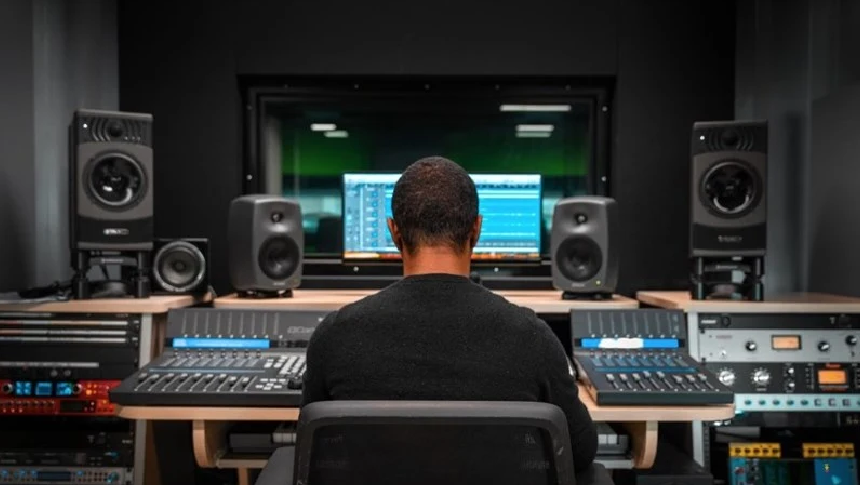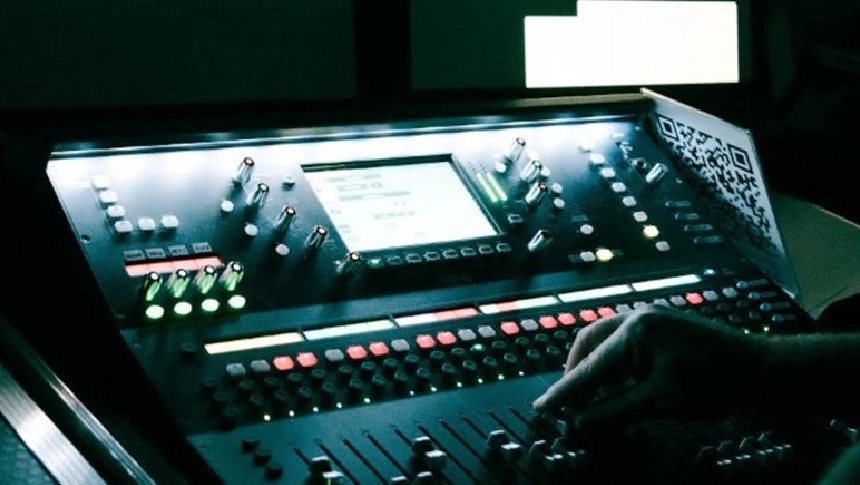The world of music production has become increasingly accessible thanks to powerful software tools. Gone are the days of needing a dedicated recording studio—with the right software and a bit of know-how, you can create professional-sounding music from the comfort of your own home.
However, with the sheer number of options out there, it can be hard to pinpoint the best one for you and get the most out of your money. This blog will give you helpful tools to help you make that decision, as well as outline the most popular tools and the benefits to each one.
What is a music production software tool?
A music production software tool, also known as a Digital Audio Workstation (DAW), is a software programme that acts as your central hub for music production. It allows you to record, edit, mix, and master audio. With this software, you can essentially transform your computer into a virtual recording studio.
DAWs are what enable musicians, producers and sound engineers to create and manipulate music on a computer, giving them a versatile platform for composing, arranging and producing music tracks.
DAWs provide a comprehensive set of tools for:
- Recording audio
- Editing audio
- Adding virtual instruments
- Mixing and processing audio
- Mastering audio
Why should you use music production software?
Music production software offers a ton of benefits for musicians and producers. DAWs are your one-stop shop for accessing the entire music production process from initial recording to final mastering. With features like virtual instruments, audio editing, mixing, and effects processing, they offer a level of control and precision that simply didn’t exist before.
DAWs are also incredibly versatile. They allow you to experiment with different genres and sounds without the limitations of physical instruments. This flexibility can give you room to be fully creative and experiment freely, which can produce some really unique results.
The great thing about music creation software nowadays is that it’s becoming more accessible, which means anyone with a computer and the right software can start creating music at home.
The accessibility of DAWs has democratised music production, meaning there are even more opportunities for indie artists to try their hand at achieving their musical dreams (and an influx of more interesting music for the rest of us!)
How hard is it to use music production software?
Software for music production can be a little tricky to get your head around at first, but they are generally user-friendly and offers extensive tutorials and online resources. While familiarity with basic music concepts is helpful, most software provides intuitive interfaces and easy-to-learn tools.
The more complex aspects, like professional mixing and mastering, might require practice or additional training. However, many DAWs offer a range of features designed for beginners, allowing you to start creating music quickly and improve your skills over time.
Top software tools for commercial music production
There are many options for you to choose from when it comes to finding the best DAW. Take a look at the list below to find out about the ones dominating the market at the moment and why.
1. Apple Logic Pro X
Exclusively for Mac users, Logic Pro X has a comprehensive feature set and a sleek interface. It’s particularly popular for recording, editing and mixing, with a strong emphasis on orchestral and film scoring. Its features also include the ability to add virtual instruments and MIDI sequencing.
2. Ableton Live 11
Renowned for its loop-based workflow and live performance capabilities, Ableton Live is a favourite among electronic music producers and DJs. Its intuitive interface and extensive sound library make it a versatile choice for a wide range of genres. It’s a great choice for both beginners and professionals.
3. Pro Tools
Pro Tools is the industry standard for professional music production. This software programme offers unparalleled precision and a vast amount of plugins and virtual instruments. It’s widely used in recording studios and post-production for film and television and is known for its reliability and stability.
4. FL Studio
This software was originally designed for electronic music but has since evolved into a powerful and versatile DAW. Its intuitive interface and step-sequencer make it popular among beatmakers and producers of various genres. It has a user-friendly interface and allows for a flexible workflow.
5. PreSonus Studio One
Another software programme known for its user-friendly approach is Studio One. This software offers a balance of features and simplicity. It’s suitable for both beginners and experienced producers, with a focus on efficient workflow and a clean interface.
6. Cubase
Cubase is a comprehensive DAW with a long history favoured for its MIDI capabilities and advanced audio editing tools. It’s a popular choice for composers, orchestrators and producers due to its more advanced features and customisation options, making it perfect for those working on complex projects.
5 Tips for choosing the best commercial music production software
Now that you have an idea of the best tools on the market at the moment, you need to know how to pick the best one for your specific needs. We have compiled a list of questions to ask yourself before making your decision so you know for sure you’re going with the right option.
- Identify your needs and goals: What kind of music do you want to create? Do you prioritise live performance capabilities or advanced editing tools? Identifying your needs will help you narrow down your options.
- Determine your budget: Computer software for music production can range in price from affordable to premium options. Choose a programme that fits your budget and look for free trials of any software you’re interested in before committing to a purchase.
- User interface and workflow: Explore the user interface and workflow of different DAWs. Choose a programme with a layout and set of tools that feel intuitive and comfortable for you.
- Platform compatibility: Ensure the chosen DAW is compatible with your operating system, whether Windows or Mac.
- Take advantage of free trials and demos: Most DAWs offer free trials or demo versions. Use this opportunity to experiment with different software and see which one best suits your needs and workflow.
So, there you have it! Choosing the right music production software can feel like a daunting task, but it can be an equally exciting process. Each DAW has its own strengths and weaknesses, so it’s all about finding the one that clicks with you. Don’t be afraid to try out different options and see what works best for your style.
FAQs
1. What do professionals use for music production?
DAWs such as Pro Tools, Ableton Live, Logic Pro X and Cubase are used the most in the music industry. These software packages offer comprehensive tools for recording, editing, mixing, and mastering audio.
2. Which software is mainly used for music making?
This can vary depending on the artist or producer, but the most popular options include Ableton Live for electronic music, Logic Pro X for Mac users and Pro Tools for professional studio environments. FL Studio and Cubase also have a strong user base across various genres.
3. What is the easiest software for making music?
Options like GarageBand (for Mac users), FL Studio and PreSonus Studio One often appeal to those starting their music production journey as they’re considered more beginner-friendly. Music production courses could also help you learn how to use certain software you feel may be the most useful to you.
4. What free software do music producers use?
Some popular free options music producers use include GarageBand (for Mac users), Audacity and Cakewalk by BandLab. These software packages offer basic recording, editing and mixing capabilities, making them suitable for beginners or those on a tight budget.





